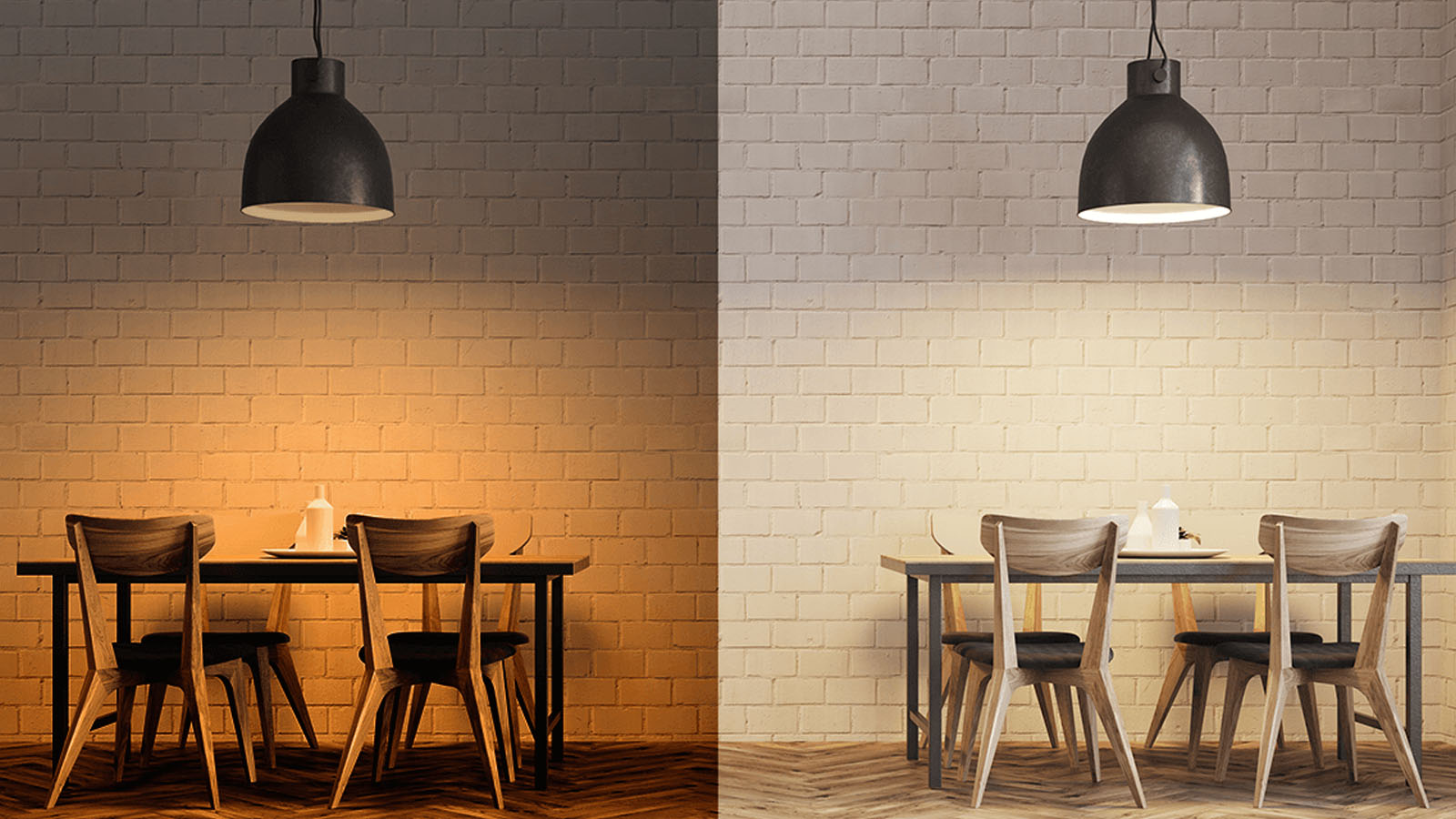
Not all LED lights are dimmable, some manufactures still offer versions that are non-dimmable which cost slightly less. In the near future we predict that all LED lights will be dimmable as standard, just like incandescent and halogens are. For now, this is something that also needs to be checked, make sure your LED lights are dimmable.
Why LED Lights Flicker & How To Solve This Problem
Dimmer switches struggle to detect that there is any load on the circuit and flickering or strobing happens. With a programmable dimmer switch, you can trim off this and delete it from existence. This won’t allow you to dim the lights to a certain level of say 1-20% but it will solve your problem.
Some minimum load or flickering issues can be solved by putting a resistive load on the circuit. One way of testing this before ordering one is to replace one of the LEDs on the circuit with a halogen. If the halogen stabilises the load, then the resistive load should work and resolve your problem.
What Makes An “LED Compatible” Dimmer Switch?
Firstly, you need to make sure your led dimmer switch operates on either leading edge (MLV) or trailing edge (ELV) technology. If you’ve got an old inductive dimmer switch it’s never going to work with LED lights. These two slightly different styles of dimming are known as TRIAC or mains dimming.
How ‘Leading Edge’ Dimmers Control LED Lights
Leading edge dimmers cut off the voltage at the beginning of the sin wave and trailing edge cut off the voltage at the end. This diagram shows the difference between leading edge and trailing edge.
Leading edge dimmers contain a coil and buzz slightly. This can be annoying, particularly in a living room or bedroom. Leading edge dimmers such as the Varilight V-Com are able to take much larger loads, even up to 600 watts on one switch.
What About ‘Trailing Edge’ Dimmers?
Trailing edge dimmers contain solid state components and are virtually silent. They tend to operate better for lower lighting loads of up to 100 watts of LED and some can dim just 1 LED with barely 1 watts of load.
But just because a dimmer switch is leading edge or trailing edge it doesn’t mean it’s an LED dimmer switch. Modern LED dimmer switches such as the Zano ZGRIDLED, Varilight V-Pro, V-Com or Eclique2, Lutron and Hamilton Litestat are programmable. This means that you can tweak the settings of the dimmer to match the type of LEDs and the load (wattage) on the circuit.
The Dimmer Switches We Sell Are Incredibly Advanced
Although the Varilght V-Pro looks like an ordinary dimmer switch with a rotary knob, it’s far from basic. The settings be easily adjusted by turning the knob in a sequence.
This allows you to change the drive mode settings from leading edge to trailing edge and it also allows you to trim off any nuisance flickering that might be happening. Flickering can sometimes still happen when the load is very low and when you attempt to dim the lights to a very low setting.
Loading Advice & “De-Rating” Dimmers
An LED load is different to a halogen or incandescent due to its high inrush currents and current spikes. An LED load needs to be treated as if it’s much higher even though it consumes less energy. You either need to de-rate the dimmer switch or overrate the LED. Some manufactures recommend to de-rate the dimmer switch to 10% of its load, so a 400 watt dimmer would be rated at 40 watts when dimming LEDs.
Varilight have introduced their own de-rating system which is available to view here. They've rated their V-Pro dimmers which are usually rated at 400 watts for halogen at only 100 watts for LEDs. The 10% rule would become the 25% rule in this situation. Another guide of the V-Pro is that it will only dim between 1 and 10 dimmable LEDs. This is just a guide as in our experience we have seen situations where up to 14 of a 6 watt GU10 LEDs have dimmed successfully, but it does depend on the brand of LED that is used.
The Varilight V-Pro no longer has a minimum load, it did used to be 10 watts for halogen and 2.5 watts for LED but Varilight have continued to develop and improve this range and can now advise that there is no minimum load requirement. This is great for the future of lighting as the wattage of LEDs continues to reduce while the efficacy (lumens per watt) continues to increase.
Further Reading On LED Compatibility With Dimmer Switches
Even if you completely understand all of the science behind dimming and sine waves it still doesn’t mean you can successfully match an LED light to a dimmer switch. Some combinations are simply not compatible and will not work. We are more than happy to assist with this or alternatively you can consult the lighting manufacturer, or the dimmer switch manufacturers recommendations.
Although you can’t go too far wrong with the Varilight V-Pro for loads of up to 100 watts and the Varilight V-Com for loads of up to 600 watts it’s not completely bullet proof due to the countless brands and types of LEDs now on the market. Although Varilight continue to develop their dimmers sometimes the improvements they make with some LED brands causes them not to work as well with others.
